
October 21, 2024| Education, Environment
By: Patrick Krudop
Welcome back to our monthly Creature Feature series, where we spotlight the wildlife around Lake Hopatcong. We’ve explored some creatures that fly, swim, and might even make you scream when you see them! This time, we’ll be sticking with some of our smaller mammals around the lake.
Mammals are warm-blooded animals with mammary glands, but the class Mammalia includes a wide variety of species, from tiny shrews to massive blue whales. Today, we'll focus on the smaller ones, but don’t fall into the assumption that their size makes them any less mighty!
The American mink is one of the more elusive members on our roster for this issue (unless you live on Halsey Island). Sharing the same family (Mustelidae) as otters, skunks, fishers, and weasels, they have a similar appearance of a long slender body and a crepuscular schedule. This means that they tend to be out and about around dawn and dusk, just in time to avoid most human activity. Despite their rather rare appearance, they aren’t endangered or threatened in New Jersey.
Mink, like many mammals, show distinct differences between males and females. Males can be twice the weight of females, ranging from 1 to 2 pounds. They occupy large territories, sometimes covering up to 3 miles of riverbanks, stream beds, or lake shores. With its 45 miles of shoreline, Lake Hopatcong provides ample habitat for mink. As semi-aquatic mammals, they make good use of this access to water as their semi-webbed feet allow them to catch and eat a diet of crayfish, frogs, small mammals, and even waterfowl.
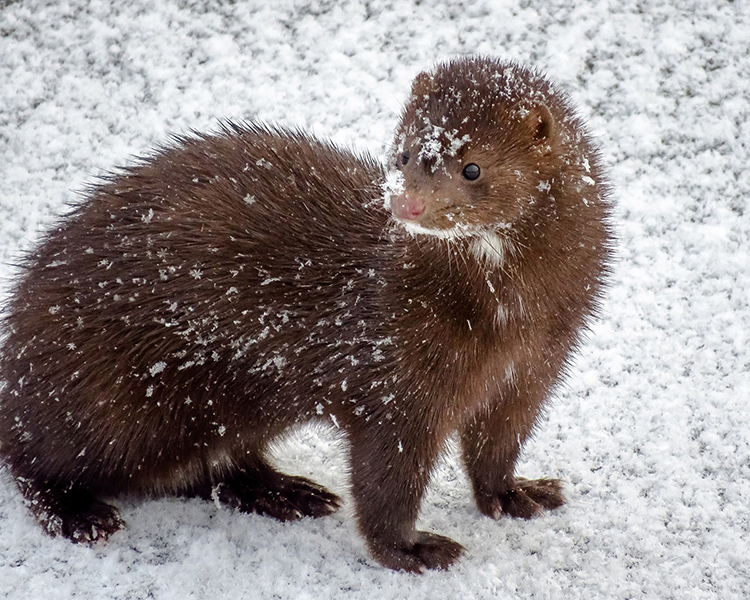 |
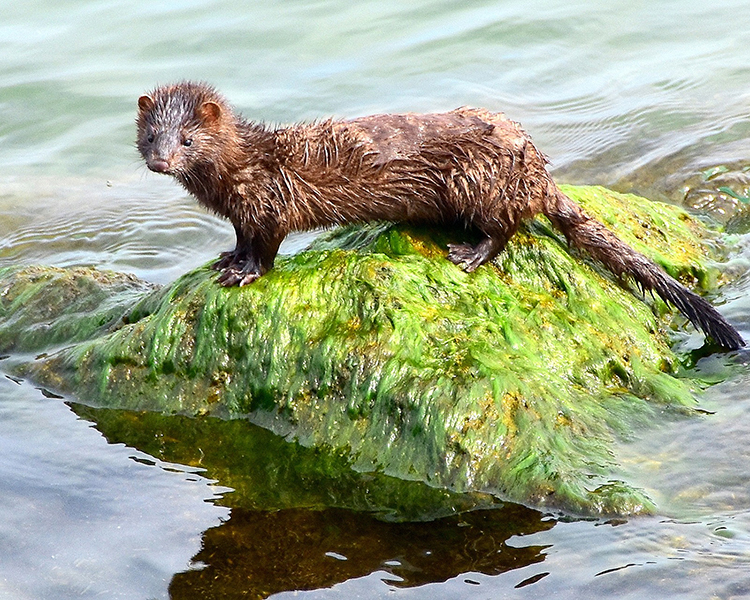 |
As fast as they are cute, the eastern cottontail rabbit is a common sight to New Jersey residents. With their distinctive cottonball-esque tail, tall ears, and large back feet, they embody the standard look of what one thinks of when they think rabbit. From head to tail, the eastern cottontail can range from 14 to 19 inches long and can weigh around 2.6 pounds. Thanks to their small size and strong legs, they can sprint up to 18 miles per hour to escape predators.
The territory of an eastern cottontail is usually circular and no more than 5 acres. They will typically never leave this circle throughout their 3-year lifespan. Within their territory, they will usually inhabit existing ground holes that were made by other species. If caught in the open, rabbits will employ several strategies to keep safe. One strategy is to stay incredibly still; they can stay still for as long as 15 minutes to try to avoid detection by the watchful eyes of predators looking for movement. If spotted, the chase commences, and they will run in a zig zag pattern to wear predators out. If this still doesn’t work, the rabbit will use its powerful hind legs to kick in self-defense.
 |
 |
The raccoon, another well-known resident of New Jersey, has earned many nicknames for its unique characteristics and behaviors. Recognizable by its distinctive bushy, striped tail, fluffy gray body, and a black and white masked face, no other mammal in North America shares its appearance. But perhaps even more interesting than its looks are its dexterous hands. These hands, combined with a heightened sense of touch, are more similar to those of primates. Raccoons even wet their hands to enhance tactile feedback when handling food, contrary to the popular belief that they’re 'cleaning' it (like the viral cotton candy videos suggests).
Raccoons are highly intelligent; they can remember how to solve a task up to three years after learning it. In captivity, they can live up to 20 years, but in the wild, their lifespan averages just 3 years, mostly due to hunting or car accidents. Although raccoons can carry rabies, they are not more susceptible than other mammals. Seeing a raccoon during the day doesn’t necessarily mean it’s infected—it’s often just a mother foraging for her young.
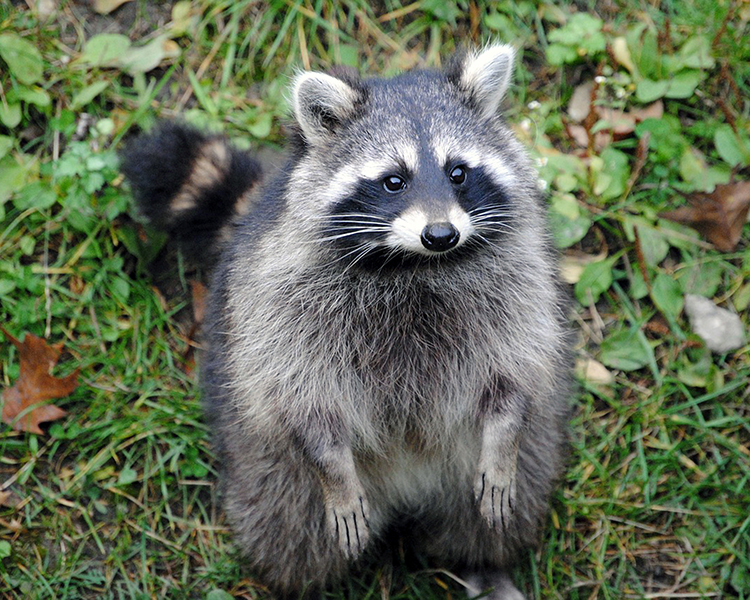 |
 |
You (or your nose) might have a strong opinion about the next critter in our spotlight. The striped skunk holds the notorious reputation of being the smelliest animal you can encounter in New Jersey. Cloaked in dark fur with two white stripes running along its body, it’s unmistakable. Skunks have glands under their tails that produce a foul-smelling, oily liquid, which they can spray up to 10 feet to ward off threats. Talk about social distancing! While the spray isn’t physically harmful, anyone who’s experienced it will tell you it’s enough to stop you in your tracks. Impressively, skunks can even perform a handstand to properly aim their spray—a perfume delivery with a bit of flair.
Skunks are usually spotted at night while they forage for food, which can include anything from fruits and vegetation to insects, worms, small mammals, and reptiles. If they can get their paws on it, they’ll eat it. During the day, they return to their underground dens, often using burrows dug by other animals. In the colder months, skunks don’t hibernate but instead enter a dormant state to conserve energy.
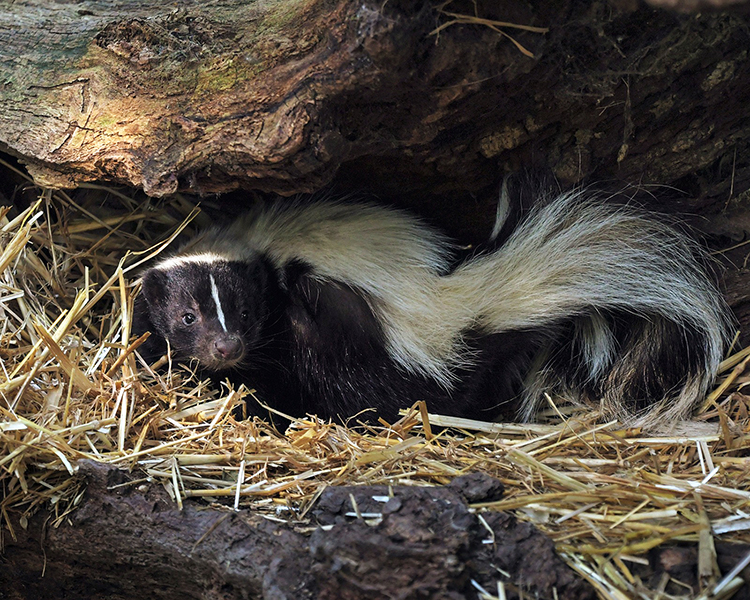 |
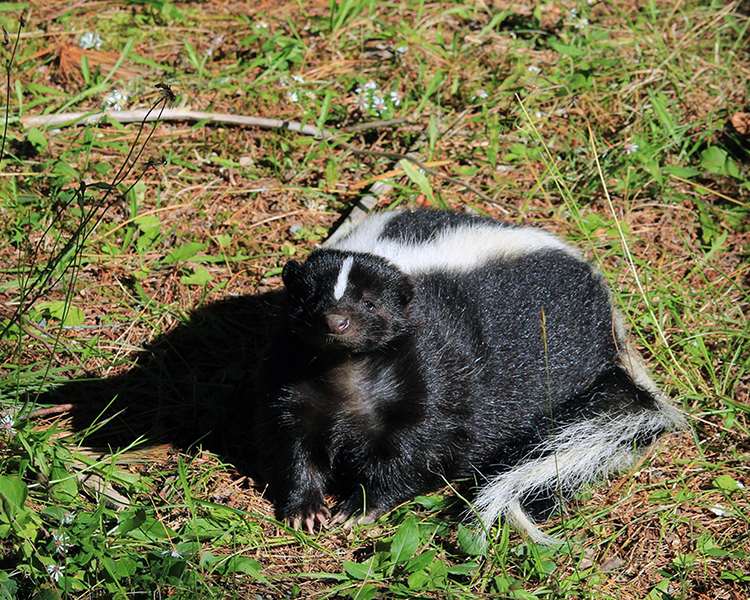 |
Someone’s coming—quick, play dead! When most people think of the Virginia opossum, they picture its Academy Award-worthy act of playing dead to deter predators. In reality, this behavior is actually involuntary, similar to a fainting goat. When threatened, the stress causes the opossum to go into shock, forcing it into a catatonic state where it appears dead. This 'freeze' response isn’t uncommon in mammals; if you’ve heard of 'Fight, Flight, or Freeze,' the opossum is an expert 'freezer.' You might wonder how being immobile helps. Well, predators prefer fresh prey over one that looks like it’s been dead for a while—no one wants a meal that could carry a disease or infection. Quite the clever tactic!
Opossums are also excellent neighbors and great helpers for outdoor enthusiasts in New Jersey. Mostly nocturnal, they rarely cause issues for people, and they’re among the best tick predators, eating up to 5,000 ticks a year. Plus, they’re immune to most snake venoms (except the coral snake) and are highly resistant to rabies, thanks to their lower body temperature (usually between 94-97 degrees Fahrenheit), which is too cold for the virus to survive. As if that wasn’t enough to make them unique among New Jersey’s mammals, opossums are also the only marsupial species in North America, giving birth to young that then live in a pouch until their eyes open at around 8 weeks. Opossums have a short lifespan, averaging just 1.5 years, due mainly to predation, accidents, and environmental factors. Still, they play a vital and fascinating role in our ecosystem!
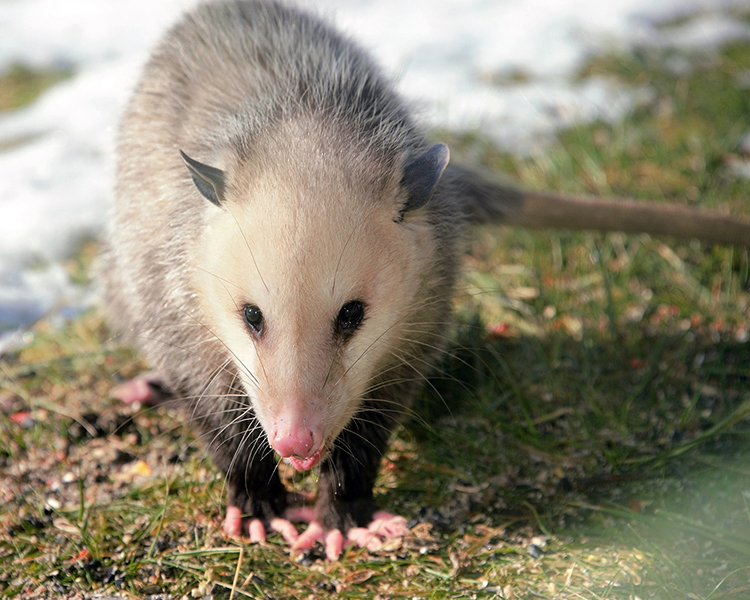 |
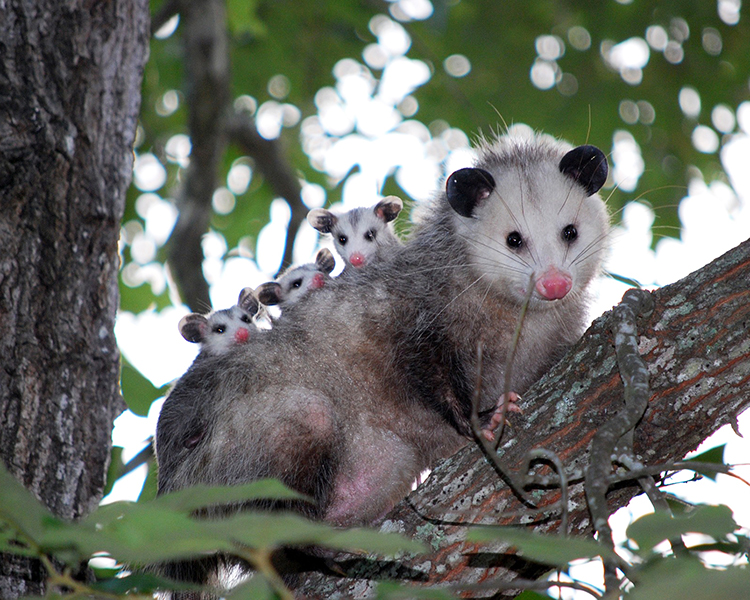 |
At Lake Hopatcong, you may encounter some of our small mammal residents, including the ones we talked about today! Whether you're a naturalist or simply curious about local wildlife, there's always something new to discover about the fascinating creatures that call Lake Hopatcong home. Every footprint, from tiny to large, helps shape the vibrant life of our lake. Even the smallest presence can have a big impact.
I hope you enjoyed learning about some of the small mammal species we have at Lake Hopatcong. If you have any wildlife photos from Lake Hopatcong, or if there’s a critter you’d like to see featured in an upcoming Creature Feature, please send your submissions to info@lakehopatcongfoundation.org. We look forward to sharing future editions of our Creature Feature!
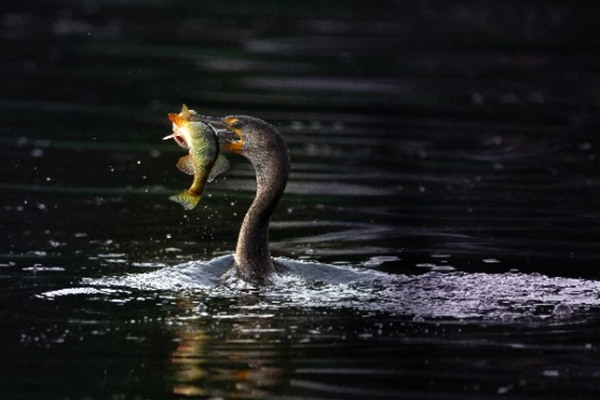
August 01, 2024
Education, Environment

September 05, 2024
Education, Environment
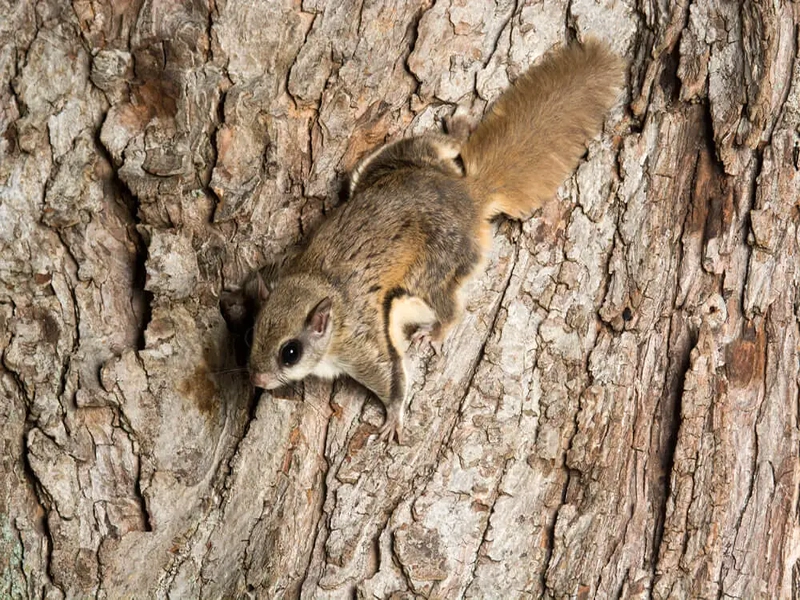
October 04, 2024
Education, Environment